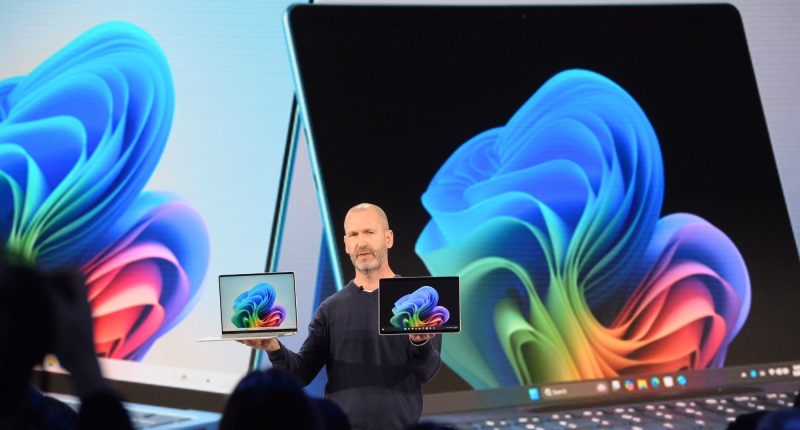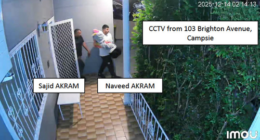Share this @internewscast.com
Microsoft released a 56-second ad for the Surface laptop on January 30, and no one realized that it was partially AI-generated until Microsoft disclosed it on Wednesday.
The ad shows different people typing away on a Surface laptop in various locations. It emphasizes the Surface laptop’s standout features, like its touchscreen and battery life.
In the close to three months since the ad’s release, no one has picked up on its AI-generated roots, per The Verge. The ad has over 46,000 views on YouTube, and none of the top comments suspect that the ad was partly AI-generated.
According to a Microsoft Design blog post released Wednesday, Microsoft employees used generative AI tools to cut down the time and expense required to create the ad, putting it together in just a month.
“With a small budget and a tiny amount of time, we were able to accomplish in a month what would have traditionally required exponentially more resources,” Brian Townsend, visual designer on Microsoft’s Windows + Devices Visual Design team, stated in the blog post. “We probably saved 90% of the time and cost it would typically take.”
The team started the process by using unspecified AI tools to create a script, storyboards, and a pitch deck. AI helped expedite the process, allowing the team to get the materials ready in a matter of days instead of weeks.
The team then told an unnamed AI chatbot what they were looking for in the ad. They went through “thousands” of additional prompts to refine the AI output.
Because AI still has trouble generating details like human motion, the team decided to use some human-created shots to fill in the weaknesses of AI-generated shots. They determined that humans had to manually capture shots with “intricate movement,” like closeups of hands typing on keyboards, while AI generated quick cuts or shots with limited motion.
AI allowed the team to display different backgrounds in the ad without having to travel to the location. However, the team acknowledged in the blog post that from time to time, AI tools would experience hallucinations or generate inaccurate responses. When hallucinations arose, the team would manually fix “any unnatural elements” that popped up.
“However, as with all things created using AI, the occasional AI hallucination would rear its head,” the blog post stated. “To combat this, the team employed a blend of AI and traditional video production tools to meticulously compose frames and correct any unnatural elements.”
Microsoft emphasized in the blog post that AI democratizes filmmaking and allows anyone to create their own ad or video.
“All it takes is imagination and the curiosity to explore the myriad of tools available,” the blog post reads.
Microsoft did not specify which AI tools they used to generate the ad, though the company’s own tool, Microsoft Copilot, is capable of creating a script, footage, and a video project from a single prompt.






